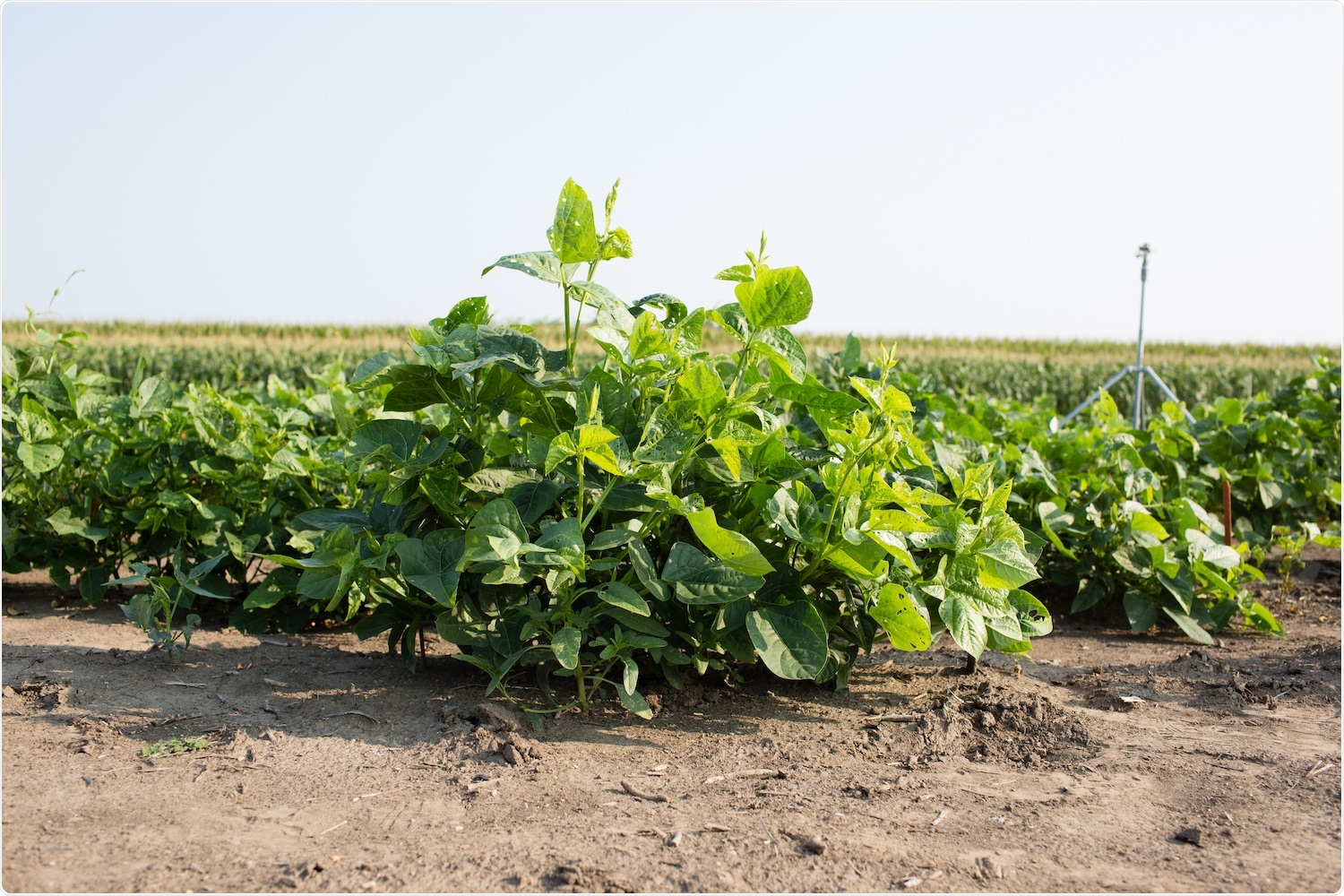A single enzyme, Rubisco, is responsible for assimilating carbon dioxide in photosynthesis to create all the carbon in human bodies, in food, and in the biosphere as a whole. Given its importance, it is not surprising that this protein is the most abundant in the world.

Cowpea. Image Credit: Realizing Increased Photosynthetic Efficiency (RIPE) Project.
Researchers at Lancaster University are working on enhancing the productivity of key crops in sub-Saharan Africa. They discovered a new flaw in the way Rubisco functions in cowpea and suspect it may affect other crops as well.
Rubisco plays a central role in photosynthesis and frequently limits carbon assimilation in crop plants. Leaves adjust the activity of Rubisco to the abundance of solar energy. However, we found that this adjustment is imperfect, and frequently there is a mismatch between how active Rubisco is and how much solar energy is available for photosynthesis.”
Elizabete Carmo-Silva, Professor, Crop Physiology, Lancaster University
Throughout Africa, cowpeas are grown for their high protein content, but they are particularly important in West Africa, where they are the most important vegetable protein source. Carmo-Silva and Senior Research Associate Sam Taylor discovered in a recent study that cowpea leaves go into the shade more rapidly than previously thought, reducing their Rubisco enzyme activity. The study was published in the journal Nature Plants.
Every day, as the sun crosses the sky, leaves cast each other from sunlight into the shade and vice versa. Several minutes are required for Rubisco activity to ramp up to the new abundance of solar energy when a leaf comes back into the sunlight, missing opportunities to convert the energy into sugars.
It has been estimated that adding the effect of those lost minutes of productivity in a day costs potential carbon dioxide uptake of at least 20%.
Photosynthetic responses are not immediate. Leaves take quite a few minutes to adjust when going from shade to high light and during those minutes the leaf is not assimilating as much CO₂ as it has the light energy for, so there is a substantial loss. We set out to identify differences among cowpea varieties that affect the speed of activation, to try and identify which ones are faster.”
Elizabete Carmo-Silva, Professor, Crop Physiology, Lancaster University
Carmo-Silva is leading this research. The project is part of Realizing Increased Photosynthetic Efficiency (RIPE), an international research project aimed at increasing global food production through the development of crops that convert sunlight into food more efficiently.
The project is supported by the U.K. Foreign, Commonwealth & Development Office, the Foundation for Food & Agriculture Research, and the Bill & Melinda Gates Foundation.
During the Rubisco process, the amount of carbon lost depends not only on how fast Rubisco can be reactivated but also on its initial level when sunlight returns. The rate at which Rubisco deactivates naturally in the shade determines this factor. Faster de-activation has a greater impact on carbon assimilation in crops.
Using a high-throughput biochemical method, researchers demonstrated that cowpea leaves only need five minutes to lose Rubisco activity, therefore even brief shading will reduce the plant’s photosynthetic productivity.
We’re not exactly clear what the mechanism is from the sun to shade that takes Rubisco activation down, but we have found that the process is quite quick. If it was a slow process, you could go back into the sun several minutes after shade and there wouldn’t be a great loss, but, really, you only need to be in shade for minutes for the majority of that drop in activity to have happened.”
Sam Taylor, Senior Research Associate, Lancaster University
It is still possible to be optimistic, despite these challenges. Although only four types of cowpeas were tested from the 1000s of varieties, there were differences in the rate at which Rubisco deactivates. It may be possible to find plants with much slower Rubisco deactivation rates within the wider gene pool of cowpea.
In this way, it may be possible to optimize the performance of cowpea, and perhaps others as well, by minimizing the impact caused by this newly identified problem in the functioning of Rubisco.
Source:
Journal reference:
Taylor, S. H., et al. (2022) Faster than expected Rubisco deactivation in shade reduces cowpea photosynthetic potential in variable light conditions. Nature Plants. doi.org/10.1038/s41477-021-01068-9.